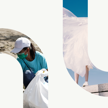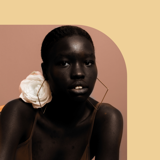
CircularTex
The purpose of CircularTex is to develop and test new textile solutions and value propositions for markets that will lead to a slowing of textile resource loops. By working with both supply (producers) and demand (private/public consumers), the project will create 4 pilots that are aligned with local market needs, developed through a user-led design process, and based on new CE design strategies (RM: 25,26,27)
In the textile industry, a 75% reduction in new products is needed to reach the climate goals (Fletcher et al, 2019). Such a reduction is only possible if there is a close collaboration between suppliers and consumers to ensure that every textile produced is fully matched to the customers' needs instead of today's over-production of poorly developed textiles that result in premature disposal, deadstock etc. (RM: p. 15-16).
Present research in slowing resource loops points to the importance of integrating the customer perspective (Salvador et. al, 2020;) and increasing the collaboration between the supply and demand side (Bocken, 2018). Unfortunately, there is very little research on how textile products perform and create value in the use phase (Wiedemann et al, 2020) as well as little knowledge about how such interaction can be facilitated in the textile industry.
Through the development of 5 textile pilots, this project offers new unique insights into the kind of solutions and value propositions that future textile solutions should offer as well as relevant guidance for collaboration between textile suppliers and private/public textile customers.
CircularTex creates value by testing and developing new business opportunities and public procurement practices supporting a circular transition in the textile sector. Through the 4 pilots, we will test and develop solutions and value propositions that will lead to a slowing of textile resource loops and have a significant impact on CO2reductions. It is estimated that approximately 10 tonnes of CO2 is saved for each tonne of textile being reused or recycled1. Furthermore, the pilots will create value through testing how textiles can be kept in circulation for longer, thereby saving resources by avoiding new production, and potentially create new jobs to ensure this, once the pilots are scaled.
Participating partners: Aalborg University, Hjørring Municipality, Carpet Care, IKEA Aalborg, Vraa Dampvaskeri, Gabriel A/S and HOLMRIS B8.
Circular Public Procurement of Textiles
New Recommendations for Local Authorities
Local authorities in Denmark hold a unique opportunity to accelerate the circular transition – not least through their procurement practices. A new publication from Aalborg University and the CircularTex project, under TRACE and the Innovation Fund Denmark, presents a set of practical recommendations for circular public procurement of light workwear.
The recommendations are based on academic research, practical case studies, and dialogue with public procurement officers and market players. They are aimed at three key stakeholder groups within local government:
-
Municipal policymakers – who must define clear visions and strategies, providing political backing for circular procurement.
-
Municipal leadership – who must allocate resources, remove barriers, and encourage cross-departmental collaboration.
-
Public procurement professionals – who must focus on functional requirements, market dialogue, and new tendering models that support circularity.
A core element is the use of a procurement hierarchy, helping local authorities prioritise solutions that reduce consumption and extend product lifespans, rather than focusing solely on recycling.
With over DKK 400 billion spent annually on public procurement in Denmark, the public sector has both the potential and responsibility to steer the market in a more sustainable direction.
CircularTEX launches a circular guide for purchasing upholstered furniture.
Get the guide with suggestions on how to solve the needs in your business in the circular economy?
The companies of the CircularTex project – all in the B2B value chain on upholstered furniture for the workplace - have developed a new circular purchasing guide with a focus on the circular economy.
A close collaboration between AAU and Gabriel, Holmris B8 and CarpetCare is behind it.
The principles and approach can inspire other industries than furniture or textiles.
The central questions, that are considered, are:
- How can we help customers make more sustainable choices?
- What should you as a buyer, facility manager, or other type of decision maker consider when faced with a need, if you want to support and develop the circular economy?
- What does this mean in relation to future business models on the production side, in design, and within the cleaning/repair/maintenance industry?
CarpetCare, which has been with us all the way, says about the process:
"Output and process have been enriching in all contexts and perspectives. We ourselves have become wiser about the manufacturer and dealership aspects, just as it has been beneficial to participate in a holistic project which has considered the systemic terms, but also focused on the guide being concrete and operational for users. "
Choose the relevant guide below
The guide will be freely available online after the event, so that it can be used and shared by all interested parties
Circulartex Guide Dk RGB Circulartex Quick Guide Dk RGB Circulartex Quick Guide Bonus Dk RGB Circulartex Guide Eng RGB Circulartex Quick Guide Eng RGB Praktiske anbefalinger
Project Leader

Louise Møller Haase
Mail: lmni@create.aau.dk






